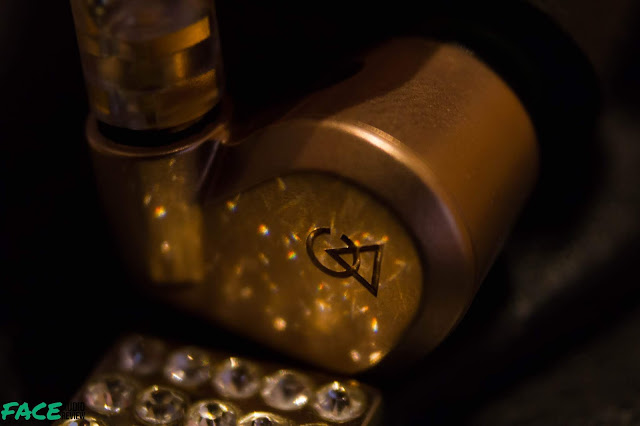 Introduction:
Introduction: Campfire Audio, a name in the industry that needs little to no introduction, recognizable in both name and design choices. With the Dorado, they’ve decided to create and put their own spin on an IEM configuration that has steadily increased in popularity in the last year or two; The 1 dynamic driver, 2 balanced armature hybrid. This configuration has had its share of hurdles and criticisms; usually these issues are all rooted in the lack of coherency, and this makes sense, dynamic drivers and balanced armatures tend to have different base “sounds” wherein if not properly executed lead to the final product sounding confused and with no real direction in tuning, just drivers doing their own things that happen to the same shell. And while constantly improving it is a setup that is often meant to give the best of both worlds can simply end up giving neither due to the nature of the difficult balancing act of tuning hybrids. With that we have the Dorado, utilizing the signature Campfire 8.5mm PVD Beryllium dynamic driver and 2 balanced armatures with T.E.A.C. wrapped in the (mostly) familiar liquid metal housing that has usually been utilized for their single dynamic models, a tantalizing combination of technology for sure. It does however come with a price tag to match at $999, only $100 less than the Vega and Andromeda, does it pull its weight in the Campfire Audio Family? Was it able to take full advantage of the technology within? Does it avoid the usual pitfalls of the configuration it utilizes? And most importantly does it fulfill the promise of Campfire Audio of “…delivers on the promise of hybrid designs; excellent detail with a visceral punchiness to the low end.”? For the most part, it does, and it does so much more.
Disclosure: The Dorado was provided to me by Campfire Audio in exchange for a comprehensive, and honest review.
 Specifications:
Specifications:
5Hz–27 kHz Frequency Response
107 dB SPL/mW Sensitivity
15 Ohms @ 1kHz Impedance
Beryllium / Copper MMCX Connections
Liquid Metal Alloy Shell
8.5mm Beryllium PVD Diaphragm Dynamic Driver
Dual Balanced Armature High Frequency Drivers
Tuned Acoustic Expansion Chamber (T.A.E.C.)

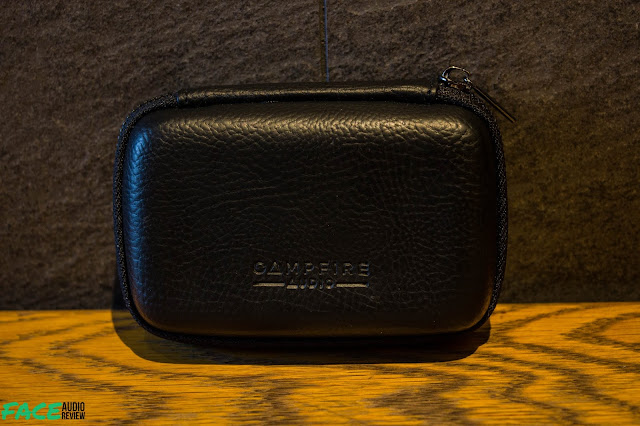
 Packaging and Accessories:
Packaging and Accessories: (As the packaging and accessories are very similar parts of this section have been lifted from the Campfire Audio Polaris Review.) The Dorado comes in the standard Campfire Audio packaging, a relatively small box, colored red just like the Lyra II and Vega, decorated with the camping/night sky theme and Campfire Audio branding with the details and photo of the model on the outside. Opening the box reveals the Campfire Audio leather zipper case, and inside the 4 core SPC litz cable and the IEMs can be found inside with the IEMs coming in red miniature drawstring pouches sporting a red velvet like exterior with a simple fabric interior to protect the housings (more on that later). The Dorado comes preinstalled with Campfire’s marshmallow tips. Removing the case, you will find a false bottom revealing the rest of the included accessories. The included accessories are a standard set of black wide bore silicone eartips, a set of Spinfit tips of a host of sizes, the remaining marshmallow tips; And then we have a warranty card, a quick start guide, an attractive lacquer pin, and an IEM cleaning tool. The zipper case of the Dorado has a pebbled leather outer finish that sports their logo engraved, black zipper with a logo engraving as well, the interior is lined with an almost shearling like fabric to keep the housings free from scuffs or scratches from within; The case is high quality, and seems to be relatively durable, and while the leather outer material seems on the thin side, the case itself seems to have a backing that that keeps it stiff and sturdy. Overall the packaging is simple and not wasteful, and the accessories included are a quality and attractive case, a wide variety of tips to suit almost any need or use case, though a softer case material as well as a softer interior for the individual red pouches would ever so slightly increase the premium factor. Another thing of note is that the red pouch in some instances may stain the coating of the cable, so be mindful.


 Build Quality:
Build Quality: The Dorado (and those of its siblings) shell is a departure from the more recognizable shell design used for the balanced armature models of Campfire, with a smoother and more compact overall shape and utilizing what Campfire calls Liquid Metal Alloy shells. The shell is divided into 3 main parts the faceplate, the main body, and the nozzle. The faceplate is bare save for the engraved Campfire Audio logo and its share of the MMCX connection, with a bevel as it meets with the main body. The main body houses a lot of the bulk, with it housing the dynamic driver, the vent for the driver and the requisite engraved L/R marking. We finally transition to the nozzle area, to me the most intriguing part of the build as it is much longer and a bit thicker than what one would normally expect, this is, would hazard where both balanced armature drivers reside, the nozzle is capped off with a metal screen cover to protect the internal components from dust, or earwax from getting inside and clogging up the nozzle or drivers. The Dorado utilizes the tried and tested Beryllium MMCX connection for extra durability; and the main portion of the shell is finished in this gorgeous rose gold paint that just exudes class without being over the top, though I did find the finish to chip and scratch just a little too easy for my preference, but I have not experienced any major marring in the finish.
On to the cable, the Dorado comes with, what is by now standard fare for Campfire IEMs with their Litz cable, the 4-core double twist SPC cable that is of exceptional quality, though one would expect nothing less since this is coming from the same minds as ALO audio and they make fantastic cables. It feels supple, is light, and is flexible while looking attractive to boot, although as previously mentioned one might want to be careful since the soft coating might take on colors from dyes prone to running.
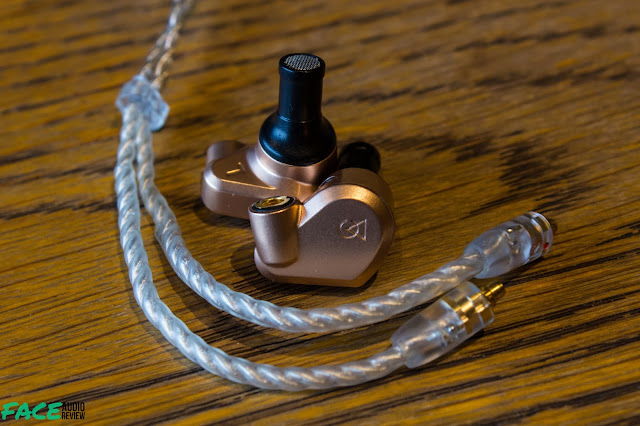
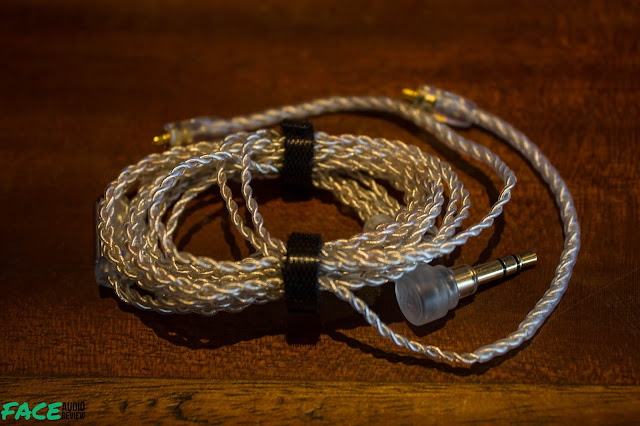 Fit:
Fit: The fitting experience with the Dorado is somewhat of a peculiar one. The relatively more compact body and smooth edges mean that it is less likely to hit parts of outer ear and cause chafing, scratching or discomfort to the wearer, typical of this shell design like with the Vega and Lyra II, however the nozzle presents an interesting challenge, it is LONG and has a larger diameter than most, so this places individuals with narrow or shorter canals in a little bit of a bind, meaning that it will likely sit outside of the ear a touch, or it might prove difficult to wear altogether. Pairing with foams seem to be the best option as many silicone tips just don’t have the bore diameter or length to fit properly, bullet shaped foams however cover the length and diameter just fine for the most part and their nature tends to lend an easier and more secure wearing experience for most people. I personally found them to fit nearly perfectly with medium foam tips, sitting and cradling right in my ear and providing great sound isolation to boot.
 Sound:
Sound: To capture as comprehensive a picture of the sonic characteristics of the Dorado, I tested them using various source, including (but not limited to) Hiby R6 with and without an IEMatch, ifi Audio xDSD DAC/Amp, FiiO Q1 Mk II DAC/Amp, LG G6 with and without the HiFi DAC enabled, stock output from an Alienware 17 R3, volume matched to as close as my measuring gear would allow. The overall sound characteristics of the Dorado seem to be a warm W, and by that, I mean it has a boosted bass response that tapers towards the mids, with another peak in the midrange, finishing with energy in the treble.
 Bass:
Bass: Let’s get this out of the way immediately the bass on the Dorado is north of neutral. It has authoritative and visceral bass delivering on both slam and impact without sounding sloppy or uncontrolled, a common issue when bass is a focus of IEMs. The sub bass response is simply wonderful, especially for those who prefer their subbass to be powerful; in Lana Del Rey’s “Love” the bass drum hits seemingly fill the stage and resonate with wonderful and natural texture. The decay of the subbass is on the slower side, not being sluggish but rather almost thoughtful in the pacing of the decay, highlighting the timbre of the dynamic driver that. The midbass lightly tapers off at the transition to the mids lending to minimize “bloom” often associated with bass forward tunings that lead to interfering with midrange performance, particularly vocals, however it doesn’t really present itself as “thin” sounding at all in fact it still shares the same qualities with the subbass in texture, note fullness and decay, however it is just a tad more subdued, presented a touch behind the subbass, however with regards to the to rest of the frequencies it is still forward in fact when listening to “I Sold My Bed, But Not My Stereo” by Capital Cities the synth bass hits definitely get your head moving but there you can easily contrast it with the subbass that appears in the bridge of the song; and bass guitars in general are simply a joy to listen to on the Dorado. The bass delivery of the Dorado is fun, full, and can put a smile on your face. Those however looking for neutral, faster bass should definitely look elsewhere though.
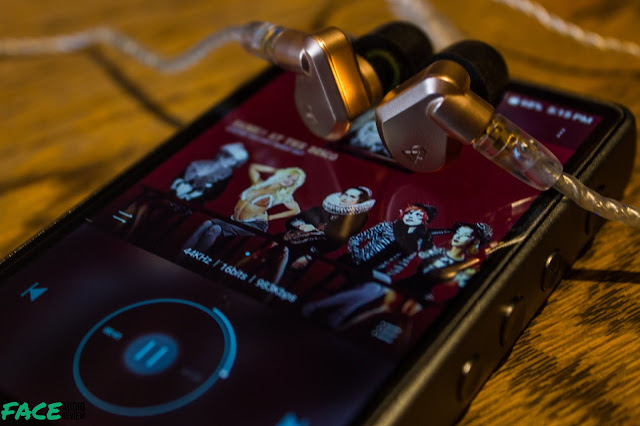 Mids:
Mids: The most prominent thing to notice with the midrange performance of the Dorado is the general forwardness and quality of the vocals, something not necessarily expected when the bass is as prominent as it is. Lower midrange is slightly behind, a result of the gradual rise from the taper in the midbass. This means that sound in that range, mostly instruments in my experience, like lower piano notes and the like sit a bit behind the vocals and suffer the most of any frequency in the tuning. Lower register vocals seem to be mostly free of any effect of the taper, “Perfectly Lonely” by John Mayer sound just about right, presenting the vocals with good thickness, with an ample amount of texture and definition that his singing doesn’t feel dry and it provides a listener with a pleasant amount of emotion with the texture. Moving up the scale to higher register vocals, I find them a hair bit ahead of the lower register, but only slightly, to me this manifests itself in more emotion coming through. “Valerie” by Amy Winehouse is a terrific example, the vocal delivery takes center stage, letting you focus on it and be complimented with the guitar riffs, and the consistent bass line and piano. Sam Smith’s “Baby You Make Crazy” is another great song on these, the chorus where he sings with a falsetto are smooth, delicate though not as well balanced as Valerie, so the bass is definitely a bit more in your face here. Instruments in the midrange as I touched on earlier take a step back from the vocals but the quality coming from pianos, guitars and the like are still very good, sounding articulate and never get muddled or lost even when there is a fair amount of distortion.
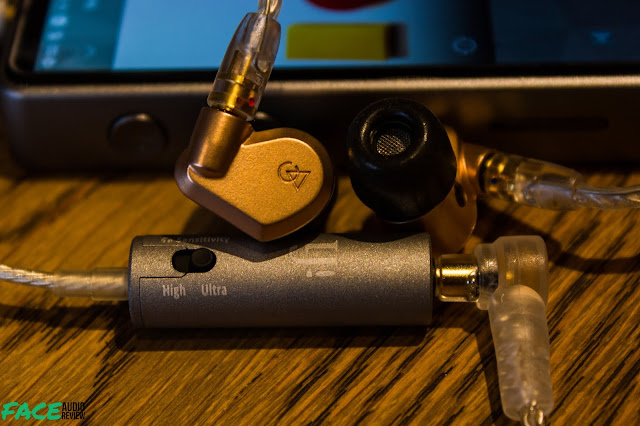 Treble:
Treble: This is where the T.E.A.C. kicks in, and Campfire has managed to insert a surprising amount of air and sparkle into the Dorado. The treble is lightly energetic and has a good treble extension, as expected from this kind of configuration but the quality and the handling of the treble here is what sets it apart. The amount of details here is good, especially remembering the amount of bass these things pack. I did not find it sibilant and it is not harsh, the frequency response charts show that well enough, what they don’t show is that for that relatively mild graph, cymbals for one is reproduced relatively well, not something I initially expected, but the articulation of cymbals, from hi-hats to ride, and crash cymbals surprised me; listening to the typical “pop/punk” or metal jaunts the Dorado handles the fast cymbals really well, good definition and good “bite” on crashes without veering into the territory of discomfort thought still not the level of articulation found in high end multi BA configurations, but that is also expected. Moving onto other instruments the story remains much of the same “Feels So Good” by Chuck Mangione, the delivery in the instrumental is smooth, but not sounding rolled off, and violins and the high end of piano as in the cover of “Yellow” by Daniel Jung highlight an amount of “attack” I like in the violin while the piano notes in the treble region have this sparkle that really cap off the treble well. Overall there is good energy in the treble so that it isn’t “soft” that doesn’t overstep and articulates itself well.
 Presentation:
Presentation: The overall presentation of the Dorado is not what I would call spacious, mostly because the forwardness of the vocals range tends to increase the intimacy of the listening experience, however the due to the recess in the transition point of the bass and mids coupled with the treble performance kind of balance or cancel each other out. The staging width is a little better than average, giving a good sense of left to right end to end, a fair bit beyond the ears. Depth on the other hand is quite good providing a good overall stage, and positioning is accurate as far as I can tell. Layering is pleasant all the way from the bass to the treble, while separation is likewise very good, with the individual presentation of instruments or notes good, even with more complex tracks and only in bass heavy tracks does the technical performance of the Dorado begin to suffer. One thing to note is that the Dorado is relatively forgiving of the source music, so even is tracks that aren’t the most technically proficient in mastering, it will not be as revealing of flaws as other IEMs, you can take that as either a pro or a con. Now back to something I touched on earlier, and one of the biggest draws of Dorado, cohesion. The way the tuning was handled is great, balancing the big bass response with the treble energy and the bump on the vocals that remove the usual “dips” in the sound that this configuration can suffer. The Dorado has a direction in the sound signature it’s trying to accomplish, and it succeeds.
 Conclusion:
Conclusion: The Dorado follows in the philosophy of Campfire Audio, it doesn’t aim for outright technical proficiency, or pure reference tuning, it is fun, engaging. The Dorado is their attempt to fulfill the goal of getting the best of both worlds with a hybrid, timbre and fullness of dynamic drivers and articulation, details, and speed of balanced armatures, all the while packaging the sound neatly together avoiding it from sounding unnatural or off kilter. For the most part they have succeeded in providing an experience that is as close as to best of both worlds as one can get, and while it leans a little warmer than true balance, the level of cohesion they deliver here can almost be said as a “maturation” in the configuration and is hopefully something more hybrids will deliver in the future. All the while all of this is packaged in a housing that while might not be for all due to the nozzle, is for the most part comfortable, attractive and is generally of the high quality we have come to expect from Campfire Audio. This all delivered in the compact but accessory rich package. The Dorado is a wonderful IEM, easily lining up with my personal preferences, and one of my favorite earphones. And yes $999 is a steep price, I feel like for those hybrid fans like me looking for a “best of both worlds” experience that Dorado is one of the most well-rounded options that fit the bill, with a combination of build quality, and a sound signature that is not only unique but also refined, that price will be worth it, not a steal mind you, but definitely well worth it.

Originally posted at:
https://faceaudioreviews.blogspot.com/2018/06/the-road-to-el-dorado-campfire-audio.html



















































